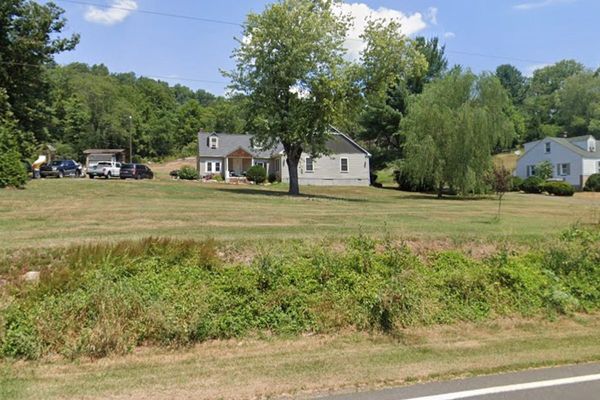
On the morning of 5 September, floodwaters gushed into the high-end gated community in Yemalur where he lived. The complex had to be evacuated. Agarwal and several hundred residents boarded tractors to safer locations. His Audi was submerged in the basement, where it still lies, perhaps damaged beyond repair. He has since put himself up in a hotel room from where he commutes to office. The floods have clearly dented the entrepreneur’s faith in the city. “The infrastructure in the city needs improvement given that it is such an important hub for entrepreneurs. Startup founders like us could even collaborate with the government to arrive at tech-led solutions," says Agarwal.

The neighbourhood Agarwal lived in was home to the city’s richest and most successful. He shared a three-bedroom apartment with his friend at 77 Place, a premium property built by Divyasree Developers on Yemalur Main Road, where homes are priced upwards of ₹3 crore. Next to it is 77 East, a luxury villa project by the same developer. On the same road is Epsilon Villas, now etched in public memory, after recent images of its flooded villas were splashed on social media. The entire stretch of premium real-estate projects, which have mostly come up in a decade or so, is barely a few kilometers from Bellandur lake, which overflowed and flooded the area.
You might also like
A bumper September quarter for banks?
What drove the SBI stock above ₹5 trillion mark
How active is your actively managed mutual fund?
Policybazaar to avoid Zomato-like situation as early investors plan exit
According to IMD data, the city recorded 131.6 mm rain on 5 September, the highest single-day rainfall for the month in 34 years. In September first week, Bengaluru Urban received 840.2 mm of precipitation against a normal of 313.2mm.
In a week, the city that prides itself as the startup capital and Silicon Valley of saw its infrastructure—drainage, roads, traffic—crumble. The impact was severe in the east in Bellandur and Outer Ring Road, home to not just tech and financial majors like Intel, Microsoft, Dell Technologies, Wells Fargo, JP Morgan and Morgan Stanley but also startups and large consumer internet companies such as Swiggy, Flipkart, Myntra and Amazon.
For a city that serves as a major back-office base for global outsourcing firms, companies had to issue business continuity plans, announce work-from-home (WFH) again and ensure customers are serviced, amid the massive disruption. The waters have receded by now, but the question persists: Can anyone fix Bengaluru?
What went wrong
Raj Bhagat Palanichamy, senior programme manager— geo analytics, at research organisation WRI India, lays the blame squarely on unplanned construction that ignored the city’s topography. Bengaluru is located on a ridge, with a series of valleys acting as water conduits to the Kaveri and Ponnaiyar rivers. Lakes were built across these valleys and floodwater flowed through them. “When the valleys were encroached upon, the flow of rainwater was impeded. Now every road and structure acts as a dam, causing flooding and stagnation in these areas," says Palanichamy.
Every major flooding point—Epsilon Villas, Rainbow Drive, Manyata Tech Park, Ecospace—is situated in these valleys. Take Epsilon, where the entire valley is over-constructed. And the impact is getting only worse with every flooding, he says.
Architect Naresh Narasimhan, managing partner, Venkatraman Associates, points out that the Bellandur catchment area was once dotted with rice and ragi fields even two decades ago. But when the land usage was changed from agricultural to industrial, the past history of the land and water were erased. The water, though, had a longer memory.
“Land aggregators bought multiple lands from farmers, stitched and sold them to developers. There were no aerial photos then. No one noticed the loss of wetlands, which acts as a sponge when it rains heavily," he says. Narasimhan conceptualised the municipal corporation’s K-100 Citizens’ Waterway project, which is aimed at desilting a network of storm water drains (SWDs) that links the city heart to Bellandur.
Down the drain
The flooding only underlines the unholy nexus between land aggregators, government and property developers. Builders and IT firms have been accused of constructing on SWDs and buffer zones, due to which the primary and secondary drains of the rajakaluves have been diverted or encroached upon. Rajakaluves or canals allow the natural water flow into SWDs.
“Heavy rains can’t be an excuse for a situation like this," says Mohandas Pai, former director of Infosys Ltd and chairman of Aarin Capital Partners, adding, “The IT sector provides jobs for young people. The government is obliged to provide infrastructure for the sector as for any industry. Already, companies who could have come to Bengaluru have gone to other cities. Companies have been talking to the government for better infrastructure, so good planning and governance are needed." He says the government must ensure all drains are cleaned regularly, rajakaluves are expanded to their original size and illegal construction removed on a war footing.
Electronic City, one of the first major IT hubs to come up and houses the campuses of Infosys and Wipro, saw less flooding compared to the Outer Ring Road. “That’s because the association that manages it ensures the drains are clear and well-kept," he says.
The IT corridor
Karnataka is eyeing $150 billion in IT exports in five years, from the current $65 billion. Outer Ring Road, a 17-km stretch and Bengaluru’s longest technology corridor, generates about $22 billion annual revenue, roughly a third of its tech revenue, according to Outer Ring Road Companies Association (ORRCA).
On 5 September, Ankit Srivastava, who works in a tech MNC in the area, missed the advisory issued by his employer that morning, asking people to work from home. As usual, he set off for office from his AECS Layout rental apartment. By the time he hit the main road leading towards Marathahalli, he knew he wouldn’t make it to work. The road was flooded, and choc-a-bloc with vehicles. Srivastava, 29, had been working from his family home in Patna since April 2020, and returned to Bengaluru only in June.
The infrastructure collapse, particularly on this stretch, comes as employees are slowly returning to offices after two years of WFH. The massive scale of real estate development on ORR, which connects Whitefield and Electronic City, has attracted hundreds of companies. Half a million people are employed along the stretch, according to ORRCA. After the excessive flooding on 30 August, ORRCA estimated losses of ₹225 crore. In a letter to chief minister Basavaraj Bommai, it said that even though only 30% of ORR population had returned to offices, the infrastructure mess has raised global concern. Then came the 5 September deluge.
“As companies get back to offices, the collapse of infrastructure has disappointed everyone on ORR. Companies that have made significant investments in ORR are disappointed at the government’s lack of focus to address infrastructure issues," says Krishna Kumar Gowda, manager, ORRCA. “After the 2017 floods, we had raised concerns. But not much was done, and ORR continued to grow at a rapid pace," he adds.
Real estate churn
If Mumbai is India’s most valuable residential market, Bengaluru is its largest commercial office destination. The city is one of the biggest contributors to office space leasing, with an average share of 25-30% in annual pan-India leasing activity between 2017 and 2021.
“For a few years now, 40-45% of Bengaluru’s annual office leasing has taken place on ORR stretch resulting in a shortage of supply and accelerating rentals," says Rahul Arora, head, office leasing advisory and retail, JLL (Karnataka and Kerala).
Property consultants are seeing a slowdown in leasing momentum in ORR and an uptick in Whitefield and Electronic City. Rishi Das, co-founder of managed workspace provider Indiqube, says a number of factors are working against ORR—traffic snarls, poor service roads, Metro work eating up road space, and now recurrent flooding episodes. Companies have been forgiving despite the various setbacks, but for how long? Potential tenants are already seeking a flood report or a terrain report of the property, to evaluate what they are signing up for.
Das, who runs five properties on the ORR stretch, believes Electronic City will be the biggest gainer after the Metro reaches it in early 2023. “The existing road infrastructure there is already good. Whitefield is also sitting on huge supply, so companies may move there too. If good supply comes up in other parts, companies will move from ORR," he says.
The way out
Palanichamy says since most of the city’s original canals and streams do not exist anymore, there is a need to create more canals based on the overall storm water plan.
It’s a simple thing to do, says Krishna Byre Gowda, Congress legislator and former minister. “There are 800 km of storm water drains in Bengaluru, of which only 400 km have been scientifically remodelled. That work was done until 2018-19. In the last three years, funds have gone to other internal works like redoing the same footpaths, retarring the same roads. Last year, when similar floods happened, ₹1,500 crore was announced by the CM for storm water drainage alone. How much of that work has happened?" he asks.
V Ravichandar, urban infrastructure expert, recalls his earliest memory of Bellandur lake from photos of seaplanes landing on the water body. The lake area is now known for its poor drainage, dense real estate development, water shortage and severe pollution. In many ways, it is a symbol of a city on the brink and struggling. “The government can set up a fully empowered central resilience unit. It can help prevent and recover from any disaster at scale, and oversee the city’s functioning on a day-to-day basis. All other civic agencies have to report to it and procure money from it on merit. It should have the right to redirect resources too," says Ravichandar.
Action plan
A dialogue between government and industry is imperative in not just civic infrastructure but also road transport, building governance, talent, social and digital infrastructure, says KS Viswanathan, vice-president, industry initiative, Nasscom. “The government in collaboration with the tech industry and Nasscom is looking at creating multiple zonal clusters and have an open dialogue on how technology can be leveraged in solving some of these issues," he adds.
It’s also a lesson learnt hopefully by the city developers, who faced public ire post-flooding. BM Jayeshankar, chairman and CEO, Adarsh Developers, believes rectangular, concrete stormwater drains need to be built across the city, with government ensuring these are not encroached upon or used for garbage dumping.
“Bengaluru housing complexes have multi-level basement parking, unlike Mumbai where parking is allowed on multiple floors above ground. If drains are choked, the basements get flooded first. It is an opportunity for developers to sit and discuss the way forward with authorities," he says.
ORRCA has already presented its ideas to the government to improve infrastructure. It includes classifying ORR stretch as a separate municipal zone, building 19 arterial roads to ease the pressure on roads during Metro construction and restoration of Ecospace and the impacted rajakaluves.
Belling the cat
Meanwhile, municipal body Bruhat Bengaluru Mahanagara Palike (BBMP) has listed encroachments by various IT parks and developer projects in the city’s Mahadevapura zone. It says an estimated 696 encroachments have blocked the rajakaluves, a crucial link between the lakes. On the list are Bagmane Tech Park, Rainbow Drive Layout, Wipro (campus), RMZ Ecospace, Epsilon, projects by Divyasree, Gopalan, Adarsh Developers, Prestige Group, Salarpuria Sattva, Columbia Asia Hospital and New Horizon College. BBMP claims notices are being issued, and encroachment removal is under way. But the question is: does it have the will to bell the big cats? The answer may have to wait until next monsoon. For now, floods, traffic or garbage may not be the IT City’s only worries. There’s also a Hyderabad or a Pune or a Noida waiting to step in, if it fumbles again.
Elsewhere in Mint
In Opinion, Harsh V Pant says India should make the most of its geopolitical sweet spot. Jaspreet Bindra examines whether Sanskrit is the best language for AI. Sudipto Mundle argues why fiscal and monetary policies need to synchronise.







